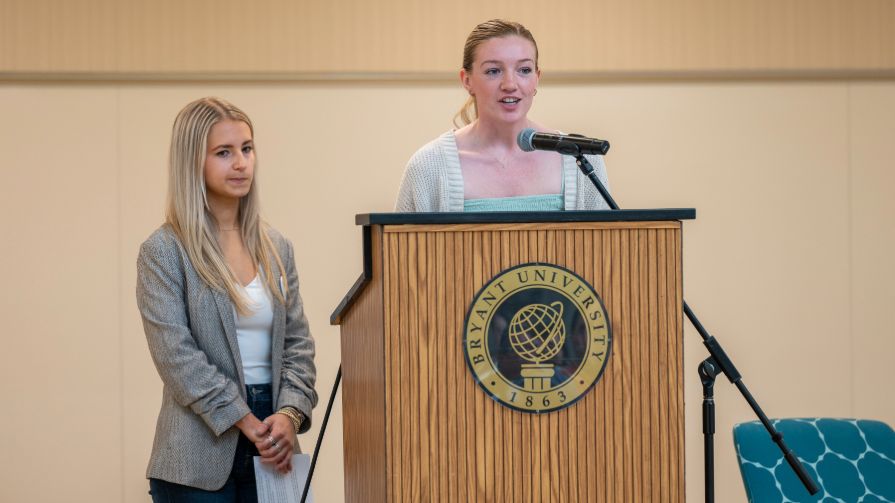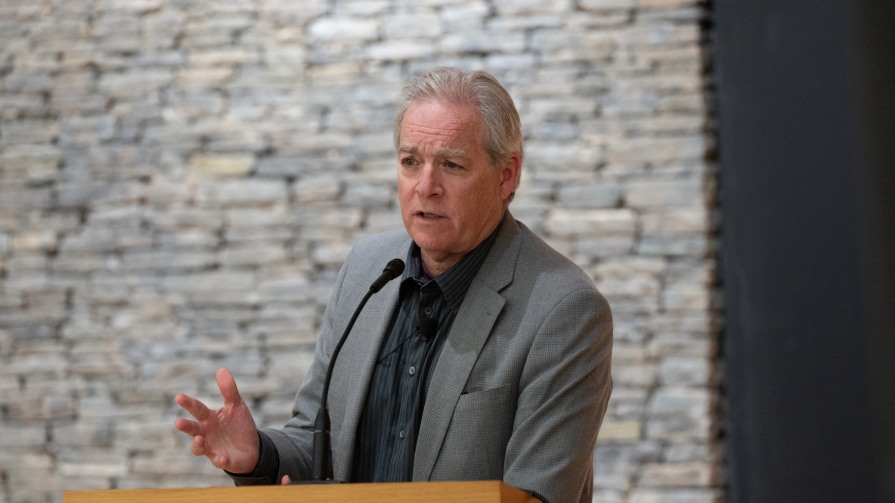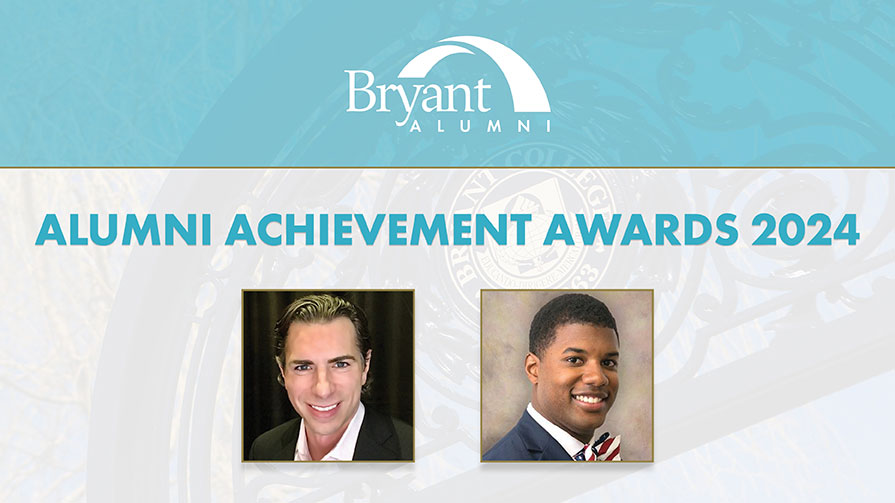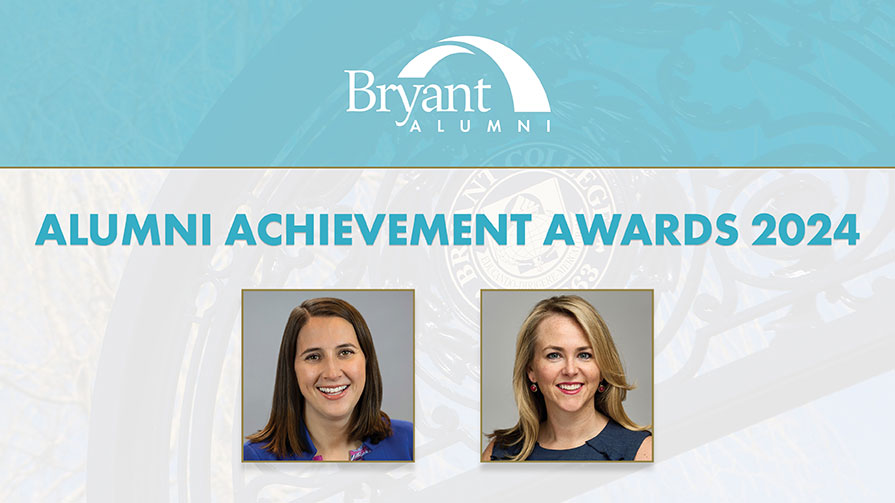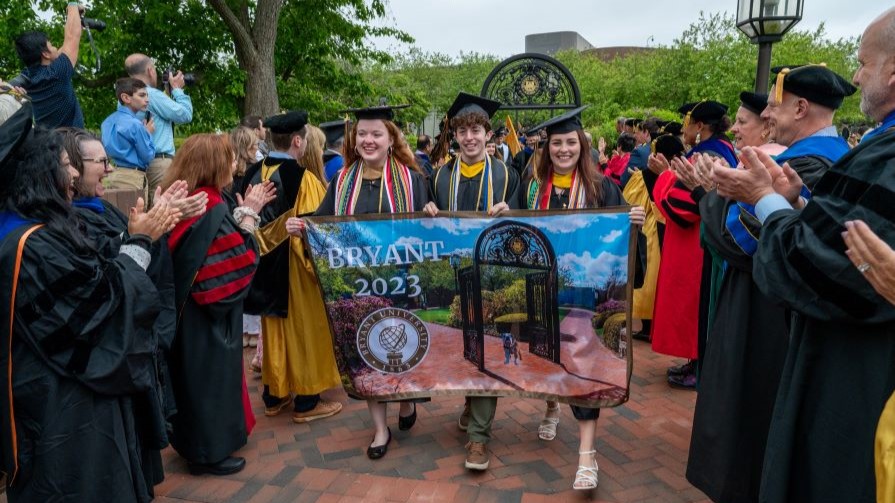The Fourth Industrial Revolution (4IR), fueled by new technologies and ways of looking at the world, is rocketing through the industrial world at unprecedented speed. Like the revolutions that preceded, it has the potential to both massively disrupt and dislocate society or to create bold and beneficial changes.
At the 2016 annual meeting of the World Economic Forum, whose theme was "Mastering the Fourth Industrial Revolution,” its founder and executive chairman Klaus Martin Schwab addressed the challenges of this new movement. “We must develop a comprehensive and globally shared view of how technology is affecting our lives and reshaping our economic, social, cultural and human environments,” noted the author of one of the definitive books of 4IR. "There has never been a time of greater promise, or greater peril."
Disrupting industries across all sectors
This revolution, says Bob Sickinger '81, an IBM Data Science Technical Sales Specialist, arose directly from consumers’ expectations of seamless 24/7 online access from device to device.
IBM’s Watson technologies work with physicians to help them diagnose and confirm cancer patient cases more rapidly. "We’re not going to replace a doctor, but we're another source of the most up-to-date information for the doctor."
Each revolution aims to create improved conditions, says Sickinger (left), and this one is an opportunity to apply human knowledge to artificial intelligence (AI) systems that will capture, interpret, and analyze vast amounts of user-generated data. That analysis can result in a wide range of benefits, from predictive maintenance alerts for Internet-connected devices to block-chain technologies that can reduce fraud and hasten insurance claims processing to IBM's Watson technologies that work with physicians to help them diagnose and confirm cancer patient cases more rapidly. “We’re not going to replace a doctor,” says Sickinger, "but we're another source of the most up-to-date information for the doctor.”
The situation is similar at marketing analytics consulting firm Marketing Management Analytics (MMA), where the volume of data to make sense of is growing exponentially, and requires improved algorithms to process. MMA's ability to gather, analyze, and disseminate its cloud-based data quickly allows it to advise its clients more rapidly and effectively, says Ivan Toro '96 (below left), Vice President of Analytics for Marketing Management Analytics. “Big Data is here and going to get even bigger; companies must invest in to get control of it," adds Toro.
Sickinger, who prepares people for the impact of AI and machine-based learning, believes technology and data analysis can even help companies build customer loyalty. Gather all the data you can and react to it quickly, he advises, to address and resolve problems. “The better you can make customers feel about their experiences, the longer they’ll stay … and loyalty translates to increased profits."
Convenience drives innovation
Convenience is another of 4IR's biggest drivers. In an "always online” world, customers are demanding that every transaction – from accessing Uber to managing their investment portfolios – be as seamless as ordering from Amazon.
“Big Data is here and going to get even bigger; companies must invest in it to get control of it."
The financial services industry is right in the middle of this revolution. Banks are finding that investing in innovation and partnering with financial technology or fintech companies is critical to ensure that traditional financial institutions stay competitive. That sometimes means changing the way they do things. Both Bryant Trustee Diane Kazarian '83 (below left), Greater Toronto Area Managing Partner and National Financial Services Leader for PwC in Canada, and Jesse Bean '02 MBA, Vice President of Advice at John Hancock Financial Services, cite mobile devices as transforming people’s relationships with their banks by speeding transactions and bypassing tellers and other bank employees, for example.
The 4IR is revolutionizing the way diverse businesses interact and communicate with people, says Kazarian. Noting the cautionary tale of Kodak, an industry leader in film photography that failed to adapt and suffered the consequences, she says, “If businesses fail to make investments and really pay attention to customers … they're out of business."
When large financial institutions take the best innovations and marry them with trusted customer data, they’ll get quicker and better solutions that are tailored more to specific customer needs and demands, adds Kazarian.
“Five years ago, we never would have envisioned having a voice-activated command system like Alexa," says Bean. By being more digitally focused with user-centered services, and working to provide consumers better and more relevant experiences and products, John Hancock Financial Services is changing how it serves its customers, grows the market, and provides capabilities for new markets, he says.
Managing Innovation
While there is broad agreement that failing to address the challenges and opportunities presented by 4IR is a perilous choice, there is less unanimity about the speed at which businesses should embrace cutting-edge technologies.
“Advancements in technology will never replace the incredibly strong need for human judgment.”
"Those companies jumping in early will have the head start on others,” Sickinger says, noting that they will be able to drive the change and will force others to catch up. There may be an advantage in a more measured pace, however. Toro suggests that "being second to market provides the opportunity to deliver a viable and commercialized solution that meets customer expectation over raw technology with experimental data yielding inconclusive results.”
While many opportunities exist for entities that embrace disruption and reinvent themselves to be successful, those opportunities require that companies devote sufficient – and not inexpensive – resources, says Kazarian. She believes organizations must clearly understand where they stand, as great risks accompany disruptions. For every 10 startups, she notes, only one or two is likely to succeed.
Innovation also brings new challenges. Bean cites cyber-security, privacy concerns and building a stronger knowledge base to engineer and develop these innovative technologies as broad-based challenges.
The 4IR's significance for workplaces
Just as the 4IR is revolutionizing businesses’ interactions with their customers, it’s also changing the workforce. Retraining workers to understand new technologies and greatly expanding the number of digital tools to reach a new market are company-specific challenges, says Bean (left). Software development is more at the forefront than ever, creating a huge demand for more data scientists and greater expertise in working with new software technologies. It also opens broader and more far-reaching career opportunities in STEM disciplines (science, technology, education and math), digital media, and digital marketing, says Kazarian.
With new positions requiring skills that did not exist five years ago, Kazarian sees more companies establishing innovation labs, hiring heads of innovation, and seeking employees with digital skills. This presents great opportunities for our millennials, she says.
Workplace culture is changing too. Existing productivity improvements, such as Google docs, allow employees to work more efficiently and effectively on documents, which is a small example of many workplace innovations, says Kazarian. And, they’re just the start,
“Five years ago, we never would have envisioned having a voice-activated command system like Alexa."
Anticipating flatter hierarchies, less need for management, and more people choosing or self-selecting the scope of their work, Bean adds, "People can work from anywhere – technology barriers have broken down. The tools are there, but management and work distribution processes need to catch up.”
That means adapting to a whole new sort of workplace. While some companies now accept employees merging their personal lives with the workplace – updating their social media profiles and shopping online during work – for instance, Toro wonders about the impact on productivity. Apps like Grubhub and UberEats open the culinary world for at-home diners, he says, expanding businesses' ability to serve their customers and create jobs for drivers.
4IR is even changing where employees live and work. Businesses are leaving the suburbs for dynamic cities, where intellectual capital is thriving. "Technology early adopters are young and want to live in cities, so companies are moving to where their future workforce and consumers are," says Toro.
There are global ramifications as well. Although some say the United States has fallen behind Asia, Toro is among those who believe that the United States will always be among those nations on the leading edge, given the size of the American market and U.S.-based companies' superb incubators that drive the processes. Many other countries, though, are making innovations of their own. Toro points to Chinese government initiatives that provide incentives for people to return to create ideation centers and leverage technologies, which he sees as a positive step forward that does not necessarily threaten the U.S. economy in the short run. In the fintech sector, Kazarian is seeing cutting-edge advances in Asia and the United Kingdom.
The human issue
But even as job descriptions and locations change, one thing won’t, and seemingly can’t: You still need people to do those jobs. While AI and machine learning continue to evolve, it appears that you can't replace the human element. "Advancements in technology will never replace the incredibly strong need for human judgment,” says Kazarian. PwC describes these investments as a "human element powered by technology," she says.
Technologies influence but cannot replace certain transactions that demand human interactions, explains Toro. “You can’t 3-D print a hamburger; technology influences its flavor… but the burger still has to be cooked." He also worries that humane and compassionate social interactions may be displaced by these easily and widely accessible new technologies.
Furthermore, systems, no matter how complex, still need humans to run them. Though AI systems, such as chat bots, can be fine-tuned to evolve with new information, they are not foolproof, says Sickinger. Cloud-based technologies offer pros and cons, and cloud-based data must be protected from hacking.
That does not mean we can be complacent though. In each revolution, it has been survival of the fittest – those who adapt and learn new technology will continue working, asserts Sickinger.
That seems to be the definitive lesson of 4IR. Constant change requires constant vigilance and a willingness to evolve with it. Ultimately, it is the responsibility of discerning and creative human beings to harness this revolution’s growing power and release its great promise.
Excerpted from the spring issue of Bryant magazine

